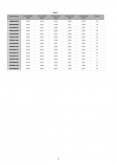Carlos Carrapiço
New Member
- Joined
- Feb 23, 2020
- Messages
- 9
This is my first post although I have been registered and following for a while.
I have acquired the 16 prismatic aluminium cell pack from BLS following the review and advise by Will in his website. Additionally, I have acquired also 4 common port BMS rated for 100A. https://www.aliexpress.com/snapshot...rderId=3002348202856063&productId=33054219276
My idea was to create a 24V 100A bank for my boat's trolling motor with the possibility of later upgrading to 36V. The remaining 8 cells would be to create a 12V 100A bank to run the electronics on the boat and to have a separe 12V 100A for starting the outboard.
Until now I have been testing the cells and have encountered the following problems:
Charging each 12V bank with a Victron Blue Smart IP67 12V 25A I was unable to charge each module higher than 3,403 in average because one will go to high and the BMS will open the circuit. The target voltage was 3,55 per cell making 14,2V per bank.
The other problem is that I received two different BMS models. One (1-102-13940-J05A) is a 120A discharge 60A charge which seems to work just fine.
The second (1-102-10000-24A) is a 120A charge/discharge but the voltage protection features for the cells seems to only kick in too late both at high and low levels.
I have also balanced all cell to 3,403V by charging them and connecting them in parallel for a couple of days. Then I start seeing a voltage drop every day between 10 and 20mV except for one module.
Please advise.
I have acquired the 16 prismatic aluminium cell pack from BLS following the review and advise by Will in his website. Additionally, I have acquired also 4 common port BMS rated for 100A. https://www.aliexpress.com/snapshot...rderId=3002348202856063&productId=33054219276
My idea was to create a 24V 100A bank for my boat's trolling motor with the possibility of later upgrading to 36V. The remaining 8 cells would be to create a 12V 100A bank to run the electronics on the boat and to have a separe 12V 100A for starting the outboard.
Until now I have been testing the cells and have encountered the following problems:
Charging each 12V bank with a Victron Blue Smart IP67 12V 25A I was unable to charge each module higher than 3,403 in average because one will go to high and the BMS will open the circuit. The target voltage was 3,55 per cell making 14,2V per bank.
The other problem is that I received two different BMS models. One (1-102-13940-J05A) is a 120A discharge 60A charge which seems to work just fine.
The second (1-102-10000-24A) is a 120A charge/discharge but the voltage protection features for the cells seems to only kick in too late both at high and low levels.
I have also balanced all cell to 3,403V by charging them and connecting them in parallel for a couple of days. Then I start seeing a voltage drop every day between 10 and 20mV except for one module.
Please advise.



